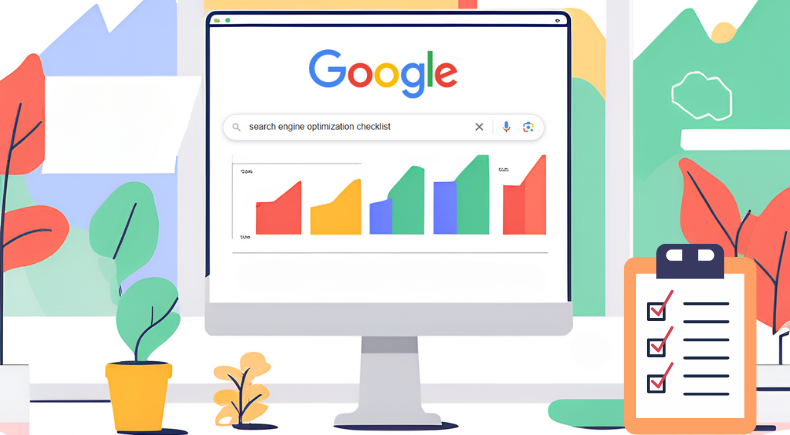The Essential SEO Checklist to Improve Your Website’s Rankings

Search Engine Optimization is the backbone of any successful website. Without it, even the best content can get lost in the digital abyss. If you want more traffic, higher rankings, and increased conversions, you need to follow a structured SEO strategy. This essential checklist covers all the critical elements to optimize your site and drive sustainable organic growth.
1. Optimize On-Page SEO
✅ Targeted Keyword Research – Use tools like Google Keyword Planner, Ahrefs, or SEMrush to identify high-impact keywords that align with user intent. Look at the top keywords driving traffic to your competitors and make sure you’re using the same terms throughout your content. These keyword research tools can also help uncover niche search terms that aren’t being bid on as an opportunity for you can go after.
✅ Compelling Title Tags & Meta Descriptions – Keep title tags under 60 characters and meta descriptions around 155 characters, incorporating primary keywords naturally.
✅ Header Tags (H1, H2, H3, etc.) – Use structured headers to improve readability and keyword placement.
✅ URL Optimization – Ensure URLs are short, descriptive, and include your primary keyword (e.g., yoursite.com/seo-checklist).
✅ Internal Linking – Link to related pages within your website to improve site navigation and SEO authority.
✅ Image Optimization – Compress images for faster load times and use descriptive alt text for accessibility and SEO benefits.
2. Improve Technical SEO
✅ Mobile-Friendly Design – Ensure your site is fully responsive and optimized for mobile users, as Google prioritizes mobile-first indexing.
✅ Page Speed Optimization – Use tools like Google PageSpeed Insights to identify and fix slow-loading pages.
✅ Secure Website (HTTPS) – Install an SSL certificate to secure your site and improve trustworthiness.
✅ Fix Broken Links & Errors – Use tools like Screaming Frog or Google Search Console to identify and resolve broken links and 404 errors.
✅ XML Sitemap & Robots.txt – Submit an updated XML sitemap to Google Search Console and ensure your robots.txt file is properly configured.
✅ Structured Data (Schema Markup) – Implement schema markup to enhance search result visibility with rich snippets.
✅ Canonical tags – there may be some pages on your site that can be accessed through different URLs. The trouble is that search engine crawlers may view this as completely separate pages. If this is the case, it helps to apply a canonical tag to the page, which tells search engine the master version of the page. (source: Moz). This makes it clear to Google and other search engines which version of the page is preferred for indexing, and none of your page rankings will be diluted across multiple variations of the same page. For example, search crawlers might be able to reach your homepage in all of the following ways:
- http://www.example.com
- https://www.example.com
- http://example.com
- http://example.com/index.php
- http://example.com/index.php?r…
3. Boost Off-Page SEO
✅ Backlink Strategy – Build high-quality backlinks from authoritative websites to boost domain authority.
✅ Guest Blogging & PR – Contribute guest posts to reputable sites and leverage digital PR for brand mentions.
✅ Social Media Engagement – Share content across social media platforms to drive traffic and encourage sharing.
✅ Online Reviews & Citations – Encourage customer reviews on Google, Yelp, and industry-specific platforms for local SEO benefits.
✅ Monitor & Disavow Toxic Links – Regularly audit backlinks using tools like Ahrefs and disavow spammy links via Google Search Console.
4. Create High-Quality Content
✅ Write for Humans First, Optimize for Search Engines Second – Provide value-driven content that answers user questions and solves problems.
✅ Long-Form Content Performs Better – Aim for 1,000+ words for in-depth coverage, but prioritize quality over quantity.
✅ Use Engaging Media – Incorporate images, videos, infographics, and charts to enhance user experience and time on page.
✅ Regularly Update Content – Refresh old blog posts, add new information, and update outdated statistics to maintain relevance.
✅ Optimize for Featured Snippets – Structure content with concise, direct answers to common questions.
5. Track & Analyze SEO Performance
✅ Google Analytics & Search Console – Monitor organic traffic, bounce rates, and keyword rankings.
✅ Track Keyword Rankings – Use tools like Ahrefs, Moz, or SEMrush to analyze ranking fluctuations.
✅ Monitor User Behavior – Use heatmaps and session recordings (via Hotjar or Crazy Egg) to identify UX issues.
✅ Adjust Strategies Based on Data – Continuously optimize your SEO strategy based on performance metrics and algorithm updates.
Final Thoughts
SEO is an ongoing process, not a one-time fix. By following this essential checklist, you can ensure your site is fully optimized to attract more visitors, rank higher on Google, and drive meaningful conversions. Stay updated on SEO trends, analyze your performance regularly, and adapt your strategy accordingly.
💡 Need help improving your site’s SEO? Let’s chat in the comments!

